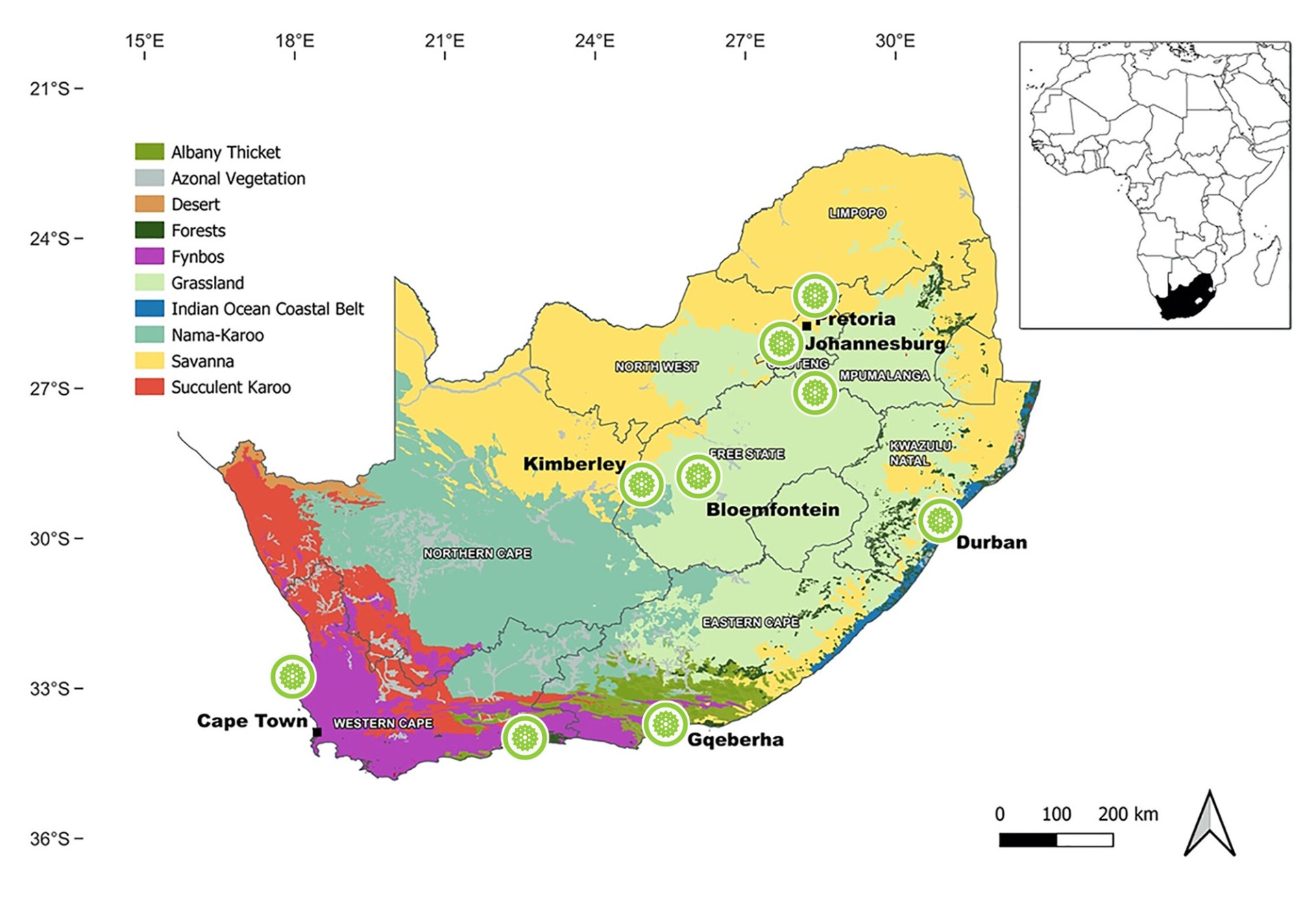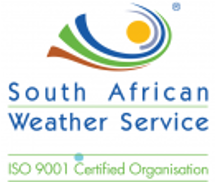Why does pollen monitoring matter?
Around 1 in 3 South Africans suffer from hay fever (allergic rhinitis), and 1 in 5 are affected by asthma. Because South Africa is home to such a wide variety of plants, from fynbos and grasslands to imported trees in our cities, the air often carries tiny particles like pollen and fungal spores. These are known as aerospora, and even though they’re too small to see, they can cause big problems for people with allergies and breathing issues.
What is SAPNET?
The South African Pollen Monitoring Network (SAPNET) is a national project launched in August 2019 to monitor what’s in the air we breathe. It collects and shares weekly data on pollen and fungal spores in cities and towns across the country.
At each site, we use special air-sampling machines (called Burkard spore traps) that run all week long. These machines pull in air and collect the tiny particles floating in it – like pollen and spores – so we can count and identify them under a microscope.
This information helps:
- People with allergies better prepare and manage symptoms
- Doctors and healthcare workers tailor treatment during allergy season
- Scientists and public health teams track patterns over time
SAPNET is coordinated by the University of Cape Town Lung Institute and includes researchers from across the country such as botanists, allergy experts, environmental scientists, and more.
A Long History, A National First
Pollen research in South Africa dates back to the 1940s, with early studies in Johannesburg, Cape Town, Durban, and Pretoria. But for most of the past century, only Cape Town had regular monitoring, and most parts of the country had no data at all.
SAPNET is the first coordinated national network to regularly collect and report on airborne pollen and spores, closing a long-standing gap in allergy and asthma information.

Where We Monitor
SAPNET has set up monitoring sites in major cities and smaller towns across a variety of climates and ecosystems. Core sites include Cape Town, Johannesburg, Pretoria, Durban, Bloemfontein, Kimberley, and Gqeberha. Over the years, the network has also monitored in additional locations such as Potchefstroom, Calvinia, George, Vanderbijlpark, Ermelo, Upington, Springbok, and Sharpeville.
Our goal is to have at least one site in every province and ecological region.
What We Track
Each SAPNET site collects weekly samples and identifies which particles are present and how much of them is in the air. These include:
- Grass pollens (like ryegrass, kikuyu, and bermuda grass)
- Tree pollens (like oak, plane tree, cypress, and mulberry)
- Weeds (like Plantago species)
- Fungal spores (such as Alternaria, Cladosporium, and Aspergillus)
We turn this data into pollen calendars and weekly reports that are shared online to help guide allergy care across South Africa. Include a polcal example
Who Makes This Possible?
SAPNET is a collaborative effort made possible by a network of dedicated researchers and institutions across South Africa. Key partners include the University of Cape Town, University of the Witwatersrand, University of the Free State, Nelson Mandela University, University of KwaZulu-Natal, North-West University, Sol Plaatje University, and local partners in each monitoring city or town.
Looking Ahead
In the coming years, SAPNET aims to expand its reach by setting up monitoring sites in all provinces and neighbouring countries, introducing community-level monitoring in areas with high allergy risk, and building partnerships with international pollen networks across the Southern Hemisphere. A key focus is also on training more local scientists and sharing knowledge through regional and global collaboration.
Together, we’re putting pollen on the map one spore trap at a time!










